More from the Kircher archives at the University of Heidelberg. As before, it’s good to see illustrations familiar from countless reprintings in books in their place of origin. The volume in question is Obeliscus Pamphilius: hoc est, Interpretatio noua & Hucusque Intentata Obelisci Hieroglyphici (1650), one of Kircher’s attempts at deciphering the hieroglyphics on Egyptian obelisks. I’m still not sure how the Great God Pan fits into these speculations even as a diagrammatic figure, unless in this case it’s Pan as a representative of Nature as a whole.
Whatever the explanation, the Pan picture often turns up in occult anthologies although you’re as likely to see the copy from Manly P. Hall’s The Secret Teachings of All Ages (1928) as the original. Hall’s rendering is useful for the translation of the Latin although he also says it may represent the god Jupiter (?) and he censors the not-very-obtrusive penis, a rather fatuous bit of prudery for a book that’s supposedly concerned with universal truths.
A few more plates follow, one of which features a serpent I swiped several years ago for a Cradle of Filth T-shirt design.
Elsewhere on { feuilleton }
• The etching and engraving art archive
Previously on { feuilleton }
• Athanasius Kircher’s pyramids
• Athanasius Kircher’s Tower of Babel
• China Monumentis by Athanasius Kircher

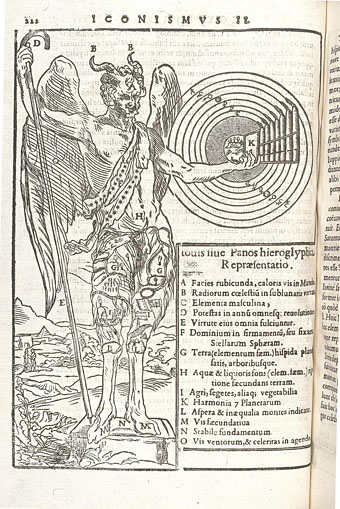
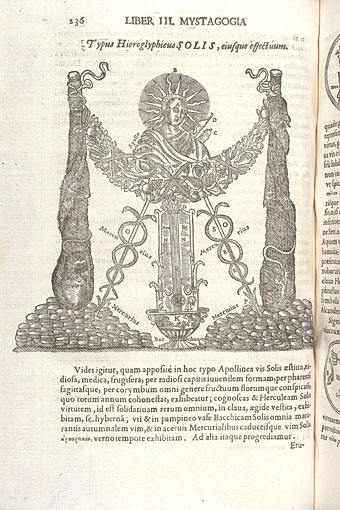
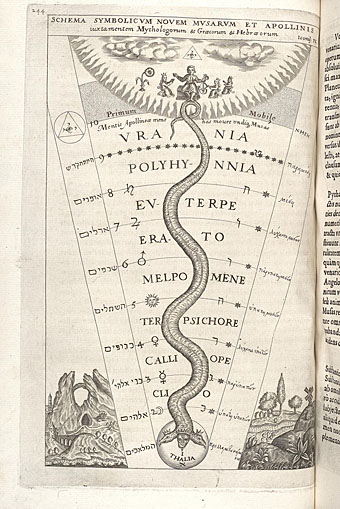
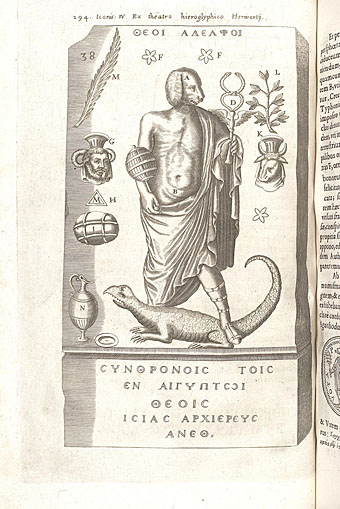
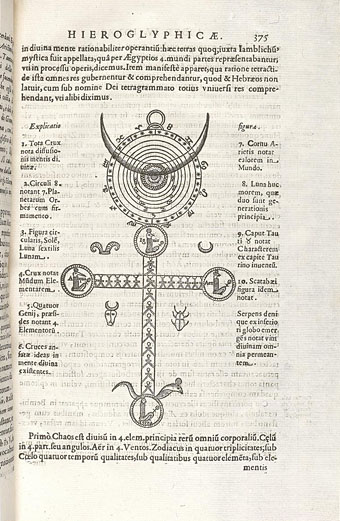
Did you know that the Kircher Pan image
was also used on the cover of a 1970 Dutch translation of Machen’s Great God Pan, the linework printed in orange against a black background?
Wonderful blog, by the way. Never a weekend update goes by without an item/ link of interest in it. Very inspiring.
Thanks, Ibrahim. Definitely didn’t know about the Machen connection otherwise I might have mentioned it.
http://www.antiqbook.com/search.php?action=search&l=nl&author=Machen,%20Arthur&title=De%20grote%20god%20Pan&se=zb&description=utrecht|bruna|beert*
That’s great, thanks, a better cover than some copies I’ve seen.
I love the cynocephalic Hermes here! Very interesting indeed! I don’t have all of my Greek apparatus handy, but the inscription under him seems to be about being enthroned with the gods of Egypt, a phrase I’m familiar with because the very same thing is written in a Greek inscription in Rome for Antinous…but there’s also something there (if I’m not mistaken) about a high priest of Isis. Hmm…
Totally unrelated question: do you happen to know if anything ever came of the non-fiction book on Selene that Steve Moore was writing? Do his literary executors (I’m guessing the Bearded Prophet of Northampton might be one such person–!?!) have any plans to bring it out, as a tribute to him as well as to his Goddess?
I’m fairly sure I saw Alan mention something in a recent interview about Steve Moore having finished his Selene book. You’ll have to take my word for that, however, since the only article I can find that mentions the book but doesn’t say anything else. I seem to recall Alan saying that plans were afoot to get the book published.
That’s such a relief! That’s a book that is deeply needed, I think, and I eagerly look forward to seeing it when it does come out!